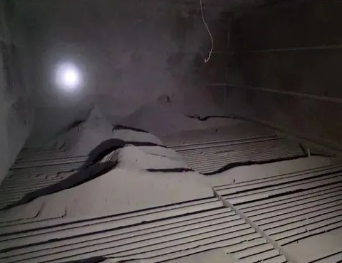
Ash blocking is a common problem in the use of air preheaters. The article analyzes this problem in terms of causes, effects and solutions.
1. Causes of ash blocking problem
- Excessive ammonia escape in the denitrification system
In response to the country’s ultra-low emission requirements, power plants have increased the amount of denitrification urea to improve denitrification efficiency. While this approach can achieve a desirable NOx reduction rate, it also leads to increased ammonia (NH3) escape. This ammonia can easily combine with SO3 in the flue gas, forming hydrogen ammonium sulfate (NH4HSO4) or ammonium sulfate ((NH4)2SO4).
At normal operating temperatures, hydrogen ammonium sulfate accumulates on surfaces in liquid form or disperses as droplets in the flue gas. This liquid hydrogen ammonium sulfate has a strong ability to capture fly ash. When combined with the fly ash in the flue gas, it forms a molten salt-like ash that can block and even corrode the air preheater.
After the air preheater pipe corrodes and leaks, the flue gas temperature drops, aggravating low-temperature corrosion and forming a vicious cycle.
- Low ambient temperature in winter
During the cold northern winters, the air preheater experiences more severe low-temperature corrosion and ash accumulation due to the low initial temperature of the inlet air. The low temperature at the cold end of the air preheater causes the water vapor or sulfuric acid vapor in the flue gas to condense on the pipe-wall, causing fly ash to adhere and form low-temperature bonding ash.
- High sulfur content in fuel
When using fuels with high sulfur content, the resulting sulfur dioxide (SO2) and sulfur trioxide (SO3) gases react with water vapor in the flue gas to form sulfurous acid or sulfuric acid vapor. If the exhaust temperature falls below the acid vapor dew point, the sulfuric acid vapor condenses on the pipe walls, corroding the metal surfaces and causing ash from the flue gas to adhere, resulting in ash blockage.
2. Effects of ash blocking problem
It results in a significant drop in boiler efficiency, increased flue resistance, higher fan power consumption, and elevated flue gas temperature. Severe ash blockage limits the unit’s load capacity, reduces the air preheater’s lifespan, and may necessitate boiler shutdowns, increasing the frequency of unplanned outages and severely affecting the power plant’s economic benefits.
3. Solutions of ash blocking problem
To solve the problem of air preheater ash blockage, Bokk Tech conducted in-depth research on the causes of ash blockage and creatively developed an intelligent online ash cleaning device using the principle of contact mechanical ash removal, providing a solution to the problem of air preheater ash blockage.
The HJQH-1 intelligent online ash cleaning device has been recognized on the Shandong Province list of first technological equipment and key core components production enterprises and products. It was also rated as “domestic leading level” by the Zhongke Co-Creation (Beijing) Science and Technology Achievement Evaluation Center.
Share The Post
